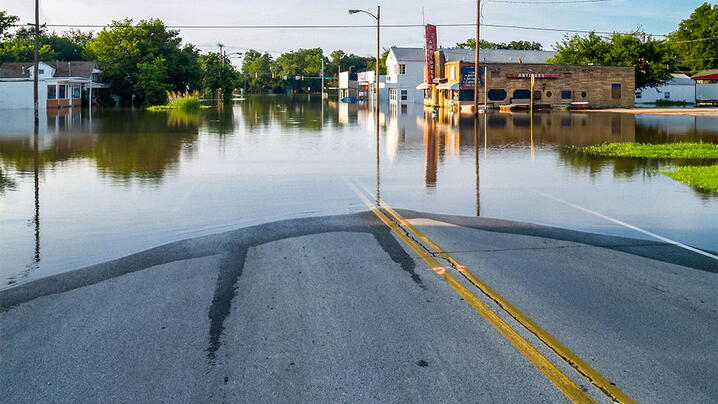
by Meghan Tosto, deputy director of recovery, Hagerty Consulting
The Federal Emergency Management Agency (FEMA) continues to write guidance for how state and local governments can assume a greater role in disaster recovery. In its latest effort to this end, FEMA published the State-led Public Assistance Guide (SLPAG – the Guide) – the first of its kind. The goal of this new policy is to clarify roles and responsibilities states may elect to share with FEMA or lead on their own in FEMA’s largest program, Public Assistance (PA). The PA program reimburses governments and nonprofits for post-disaster emergency response, infrastructure restoration, and hazard mitigation activities. However, as written, the Guide appears to require significant state capacity without a financial incentive.
State-led PA is voluntary, only for small-sized presidentially declared disasters, and does not confer additional authority to states for resolving federal recovery policy disputes. As such, it is not clear why states would be eager to take on added responsibility, which carries extra risk.
As noted in a previous post, state and local government leaders are increasingly responsible for shouldering the disaster recovery burden. FEMA’s 2018-2022 Strategic Plan articulates this vision to have recovery be “federally supported, state managed, and locally executed.” This new FEMA Guide focuses on the middle point: increasing the states recovery management role.
What does the State-led PA Guide say?
The new State-Led PA Guide was created to have states, territories, and tribes oversee certain recovery efforts for smaller-scale disasters--called Level III. FEMA defines Level III disasters as those that require only a “moderate amount of direct federal assistance,” two steps down from the more severe Levels I and II. It relates specifically to the level of FEMA staff activated per disaster.
If a state expresses interest in State-led PA for a Level III disaster, FEMA reviews its existing capacity, capabilities, and disaster experience. FEMA must approve State-led PA, but the Guide does not outline clear criteria by which FEMA will make this decision. What is clear is that not all states are good candidates.
The Guide outlines three roles in which states can assume extra responsibility:
- Customer service.
- Site inspections.
- Recovery project scoping and costing.
These roles can be shared with or kept independent from FEMA staff on the ground. Recipients do not have to take on all roles. FEMA and the state will determine the right mix of roles when reviewing existing capacity, capabilities, and experience.
What does FEMA hope to achieve?
FEMA claims that State-led PA will yield several benefits, including:
- Continuity of contact, which assumes that state personnel assigned to each government applying for federal assistance will be capable advocates and will not change.
- Reduction of appeals/audits, which assumes that state personnel can help resolve disputes upfront and better assist local governments with federal compliance.
- Tailored customer service, which assumes that states are more familiar with recovering communities than FEMA would be.
The Guide informs certain flexibility in the process, as it “is not intended to prescribe” recovery operations but rather give “broad guidance that can be adapted” to state resources.
The big-picture goal here is for FEMA to preserve its resources in Level III disasters to more adequately respond to larger Level I and II disasters.
Why should states be cautious if presented with this option?
The Guide provides clear operational choices for states to assume specific recovery roles that were traditionally fully or mostly led by FEMA. However, while this may make recovery broadly more efficient, states are not awarded additional funding or discretionary authority to do so.
Even under State-led PA, FEMA must retain certain responsibilities, including obligating funds, determining final recovery project eligibility, adjudicating appeals, and ensuring compliance with all applicable federal regulations. States may lead the recovery efforts, but FEMA must still review and approve all projects.
Without extra financial support or final decision-making authority, states may be hard pressed to take on recovery legwork for the federal government. FEMA policy will evolve as it implements this Guide, so we hope that some of these concerns are addressed. But as it stands, State-led PA may only be worthwhile for the smallest, most straight-forward recoveries.
Hagerty Consulting is a proud ICMA Strategic Partner and participant in the 2019 ICMA Regional Conferences.
New, Reduced Membership Dues
A new, reduced dues rate is available for CAOs/ACAOs, along with additional discounts for those in smaller communities, has been implemented. Learn more and be sure to join or renew today!
